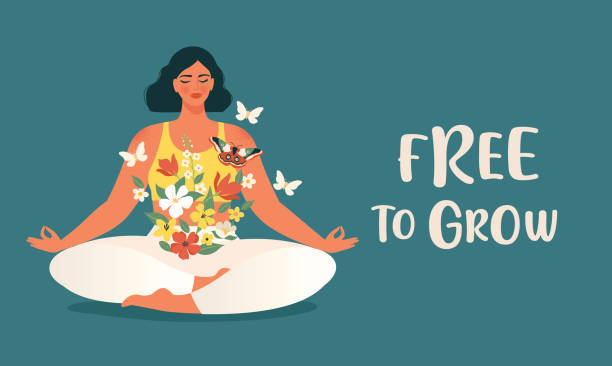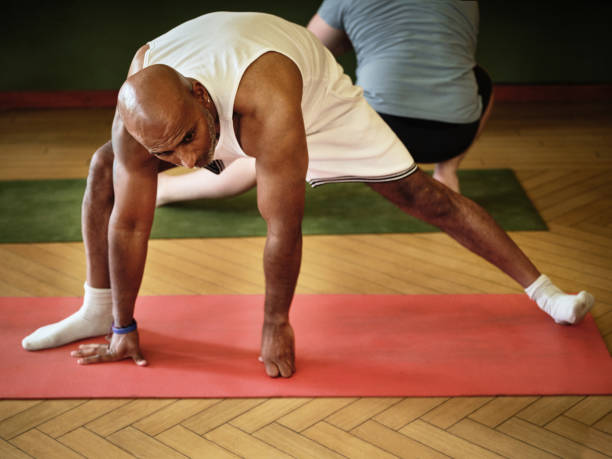Introduction
Definition of Yoga
Yoga, an ancient practice originating from India, encompasses physical postures, breath control, meditation, and ethical disciplines. It’s not just a form of exercise but a holistic approach to health and well-being.

Historical Background
Yoga dates back over 5,000 years and has evolved through various stages, from the early Vedic texts to the contemporary styles practiced worldwide today. Ancient yogis developed yoga to harmonize the mind, body, and spirit, creating a balanced and integrated way of living.
Importance and Relevance of Yoga Today
In today’s fast-paced world, yoga offers a sanctuary for individuals seeking peace and wellness. Its relevance has surged, with millions practicing yoga to improve physical health, mental clarity, and emotional stability.
Physical Benefits of Yoga
Improved Flexibility
Yoga poses stretch your muscles and increase your range of motion. With consistent practice, flexibility improves, which can enhance performance in other physical activities and reduce the risk of injuries.
Increased Strength
Many yoga poses require you to support your body weight in new ways, including balancing on one leg or supporting yourself with your arms. These poses build strength in muscles throughout the body.
Better Posture
Yoga helps develop awareness of your body and its movements, which translates into better posture. Poses like Mountain Pose and Tree Pose enhance alignment and strengthen muscles that support your posture.
Enhanced Balance
Balance poses such as Tree Pose and Warrior III improve your stability. Enhanced balance can benefit daily activities and sports, as well as prevent falls and injuries.
Pain Relief
Yoga can alleviate chronic pain conditions such as lower back pain, arthritis, and headaches. By improving flexibility and reducing tension in the muscles, yoga offers a natural remedy for pain relief.
Cardiovascular Health
Yoga enhances cardiovascular health by improving circulation, lowering blood pressure, and reducing stress. Practices that combine physical postures with breathing exercises can boost heart function and overall endurance.
Mental and Emotional Benefits
Stress Reduction
Yoga is renowned for its ability to reduce stress through a combination of physical movement, breath control, and meditation. It lowers levels of the stress hormone cortisol, promoting a sense of calm and relaxation.
Enhanced Mental Clarity
The meditative aspects of yoga enhance mental clarity and concentration. By focusing on the present moment, practitioners can clear their minds of clutter and improve cognitive function.
Improved Concentration
Yoga trains the mind to focus on single tasks, which can enhance concentration and productivity in daily life. Practices like Trataka (focused gazing) specifically aim to improve focus and attention.
Emotional Stability
Regular yoga practice can lead to improved mood and emotional regulation. It helps balance the nervous system, reducing symptoms of anxiety and depression.
Better Sleep Quality
Yoga can significantly improve sleep quality by promoting relaxation and reducing stress. Specific practices like Yoga Nidra (yogic sleep) are designed to aid in achieving deep, restful sleep.
Types of Yoga
Hatha Yoga
Hatha Yoga is a gentle introduction to the most basic yoga postures. It is great for beginners, as it prepares the body and mind for meditation by building strength and flexibility.
Vinyasa Yoga
Vinyasa Yoga involves a sequence of poses that flow smoothly into one another, synchronized with breath. It’s known for its cardiovascular benefits and can vary in intensity from gentle to vigorous.
Ashtanga Yoga
Ashtanga Yoga is a rigorous style of yoga that follows a specific sequence of postures and is similar to vinyasa yoga, but faster-paced. It builds strength, flexibility, and stamina.
Bikram Yoga
Bikram Yoga consists of a fixed sequence of 26 poses practiced in a heated room. The heat allows for deeper stretching and detoxification.
Kundalini Yoga
Kundalini Yoga combines postures, breathing exercises, and chanting to awaken the energy at the base of the spine. It focuses on spiritual and mental well-being.
Iyengar Yoga
Iyengar Yoga emphasizes precision and alignment in the performance of postures. It often uses props like belts and blocks to aid in perfecting the poses.
Restorative Yoga
Restorative Yoga is a relaxing style of yoga intended to release tension and stress. It uses props to support the body in restful poses for extended periods.
Yin Yoga
Yin Yoga involves holding poses for longer periods to stretch the connective tissues and improve flexibility. It’s a slow-paced style of yoga with meditative qualities.

Common Yoga Poses and Their Benefits
Mountain Pose (Tadasana)
Mountain Pose is a foundational pose that improves posture, balance, and awareness. It helps in grounding and aligning the body.
Downward-Facing Dog (Adho Mukha Svanasana)
Downward-Facing Dog strengthens the arms, shoulders, and legs while stretching the hamstrings and calves. It also calms the brain and energizes the body.
Warrior Poses (Virabhadrasana I, II, III)
Warrior Poses build strength and stability in the legs and core. They also improve balance, focus, and confidence.
Tree Pose (Vrksasana)
Tree Pose enhances balance and concentration. It strengthens the legs and core while promoting mental clarity.
Bridge Pose (Setu Bandhasana)
Bridge Pose stretches the chest, neck, and spine. It also strengthens the back, buttocks, and hamstrings, and stimulates the abdominal organs.
Child’s Pose (Balasana)
Child’s Pose is a restorative pose that calms the brain, relieves stress, and gently stretches the back, hips, and ankles.
Yoga and Health Conditions
Yoga for Back Pain
Yoga can be highly effective in managing back pain. Poses that stretch and strengthen the back muscles, such as Cat-Cow Pose and Sphinx Pose, can provide relief.
Yoga for Anxiety and Depression
Yoga’s combination of physical activity, breath control, and meditation can significantly alleviate symptoms of anxiety and depression by promoting relaxation and mental clarity.
Yoga for Arthritis
Gentle yoga poses can improve flexibility and reduce joint pain in people with arthritis. Practices like Restorative Yoga and Yin Yoga are particularly beneficial.
Yoga for Diabetes
Yoga helps manage diabetes by reducing stress, promoting weight loss, and improving blood sugar levels. Poses like Legs-Up-the-Wall and seated forward bends are especially helpful.
Yoga for Heart Health
Regular yoga practice can improve heart health by lowering blood pressure, reducing cholesterol levels, and improving overall circulation. Poses like Cobra and Fish Pose are heart-friendly.
Yoga for Asthma
Breathing exercises in yoga can enhance lung capacity and control, providing relief from asthma symptoms. Pranayama practices are particularly beneficial.
Yoga in Daily Life
Morning Yoga Routine
Starting the day with yoga can boost energy levels and set a positive tone for the day. A morning routine might include Sun Salutations and gentle stretching.
Yoga at Work
Incorporating yoga into the workday can reduce stress and improve productivity. Simple desk stretches and breathing exercises can make a significant difference.
Evening Yoga Routine
An evening yoga routine can promote relaxation and improve sleep quality. Gentle poses and meditation can help unwind from the day’s stress.
Yoga for Kids
Yoga can be fun and beneficial for kids, improving their flexibility, strength, and concentration. Poses like Butterfly and Cat-Cow are particularly engaging for children.
Yoga for Seniors
Yoga can help seniors maintain mobility, balance, and overall health. Gentle styles like Restorative and Hatha Yoga are ideal for older adults.
Preventive Measures through Yoga
Injury Prevention
Yoga enhances body awareness and alignment, which can prevent injuries in other physical activities. Strengthening and stretching muscles also protect joints and improve resilience.
Disease Prevention
Regular yoga practice can reduce the risk of chronic diseases such as heart disease, diabetes, and obesity by promoting a healthy lifestyle and reducing stress.
Stress Management
Yoga is an excellent tool for managing stress. Techniques like deep breathing, meditation, and physical movement help lower stress hormone levels and induce relaxation.
Weight Management
Yoga supports weight management by promoting physical activity, reducing stress, and encouraging mindful eating. Active styles like Vinyasa and Ashtanga can burn significant calories.

Personal Stories and Case Studies
Transformation Stories
Countless individuals have transformed their lives through yoga, finding physical and mental health improvements. Stories of personal transformation can be incredibly inspiring and motivating.
Health Recovery Stories
Many people have used yoga to aid recovery from illnesses or surgeries. These stories highlight the healing power of yoga and its role in rehabilitation.
Mental Health Improvement Stories
Yoga has profoundly impacted the mental health of individuals, helping them manage conditions like anxiety, depression, and PTSD. Personal accounts can offer hope and encouragement.
Expert Insights
Quotes from Renowned Yoga Instructors
Incorporating quotes from well-known yoga instructors can provide valuable insights and inspiration. Experts like B.K.S. Iyengar and Pattabhi Jois have left a lasting legacy in the yoga community.
Medical Professionals on Yoga’s Benefits
Medical professionals often recognize the therapeutic benefits of yoga. Including their perspectives can add credibility and depth to the discussion on yoga’s health benefits.
Conclusion
Summary of Key Points
Yoga offers a myriad of physical, mental, and emotional benefits. From improving flexibility and strength to reducing stress and enhancing mental clarity, yoga is a comprehensive practice that can improve overall well-being.



